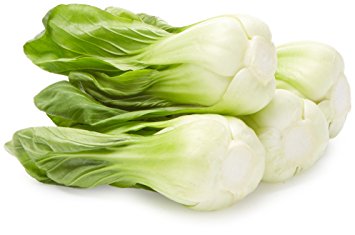Try Bok Choy for a Different Vegetable
TEXARKANA, Ark. –
If you have shopped in the produce section of the supermarket lately or strolled the aisles of the farmers market, you may have seen an odd looking vegetable with large white stalks and dark green leaves and wondered what it was. Bok choy, also called Chinese cabbage or pak choi, is a member of the Brassica cabbage family. It is highly nutritious and very low in carbohydrates. You will see it a lot in Asian cuisine.
You may see Bok Choy advertised as several names, bak choi, paak choi, Chinese cabbage, nappa cabbage or Peking cabbage. Although Bok Choy has been cultivated in China for centuries, you can now find it growing in gardens here. Bok Choy, like many other vegetables from its family, has the same sweet, but peppery flavor.
When purchasing bok choy, select stalks that are pure white and firm. Look for leaves that are dark green and non-wilted. Do not select bok choy that has any brown spots on its leaves, this type of bok choy is less flavorful. Also watch for leaves that are limp or stalks that are slimy. These are signs of deterioration.
Baby bok choy, which is a younger version of bok choy, should be purchased following the same standards. Once purchased, safely store unwashed bok choy in your refrigerator for up to a week, be sure to wrap it in paper towels or an unsealed plastic bag and store in the vegetable crisper section of the refrigerator.
To prepare, chop off enough of the base so that each stalk can be washed individually. Rinse stalks and leaves under running water, using a vegetable brush. When cooking mature bok choy, do not cook it whole; instead first remove its leaves from the stalks and cut the stalks into pieces. Next, take the leaves that are removed and cut into pieces as well. Both the stalk and leaves are edible.
Bok choy can be boiled, steamed, or stir-fried. To stir-fry, cut off the stalks and slice. Cook for a couple of minutes and then add the leaves, steam for 3-4 minutes and serve with soy sauce, ginger or hot peppers. Since it is a member of the cabbage family, it cook it as you would cabbage.
It is packed full of flavor and is a delicious way to keep up with the intake of vital vitamins such as vitamin A and C. One cup of raw bok choy contains only 13 calories, with no fat nor cholesterol and is a good source of calcium and potassium. It is also low in sodium and is a moderately priced vegetable.
It is not surprising that Bok Choy is quickly becoming a tasty alternative to cabbage, as well as a healthy dietary addition.
Fresh Bok Choy can be purchased at larger supermarkets as well as the Gateway Farmers Market, at the corner of 9th and Jefferson.
For more information, contact the Miller County Extension Office, 870-779-3609 or visit us in room 215 at the Miller County Courthouse. We're online at chadley@uada.edu, on Facebook at UAEXMillerCountyFCS/CarlaDue, on Twitter @MillerCountyFCS or on the web at uaex.uada.edu/Miller.
Try this quick and easy recipe for Easy Bok Choy Salad. It will keep you out of the kitchen and your friends and family will be surprised at how good Bok Choy is.
Easy Bok Choy Salad
One half cup slivered almonds or cashews, lightly toasted
1 large head bok choy, trimmed and cut into bite-size pieces
1 bunch green onions, chopped
1 red, green or orange bell pepper, sliced
2 (3 ounce) packages ramen noodles, broken into pieces
1/2 cup canola oil
1/4 cup white sugar
1/4 cup balsamic vinaigrette salad dressing
1 tablespoon soy sauce
Toss bok choy, green onions, red pepper, and ramen noodles with the almonds or cashews. In a separate bowl, whisk one half cup canola oil, sugar, balsamic vinaigrette dressing, and soy sauce in a separate bowl until combined. Pour dressing over vegetables and toss to mix. Chill until served.
Nutrition facts per serving: 452 calories; 35.5 g fat; 31.8 g carbohydrates; 5.1 g protein; < 1 mg cholesterol; 506 mg sodium.
By Carla Due
County Extension Agent - FCS
The Cooperative Extension Service
U of A System Division of Agriculture
Media Contact: Carla Due
County Extension Agent - FCS
U of A Division of Agriculture
Cooperative Extension Service
400 Laurel Street, Suite 215 Texarkana AR 71854
(870) 779-3609
cdue@uada.edu
The Arkansas Cooperative Extension Service is an equal opportunity institution. If
you require a reasonable accommodation to participate or need materials in another
format, please contact your County Extension office (or other appropriate office)
as soon as possible. Dial 711 for Arkansas Relay.
Pursuant to 7 CFR § 15.3, the University of Arkansas System Division of Agriculture
offers all its Extension and Research programs and services (including employment)
without regard to race, color, sex, national origin, religion, age, disability, marital
or veteran status, genetic information, sexual preference, pregnancy or any other
legally protected status, and is an equal opportunity institution.
